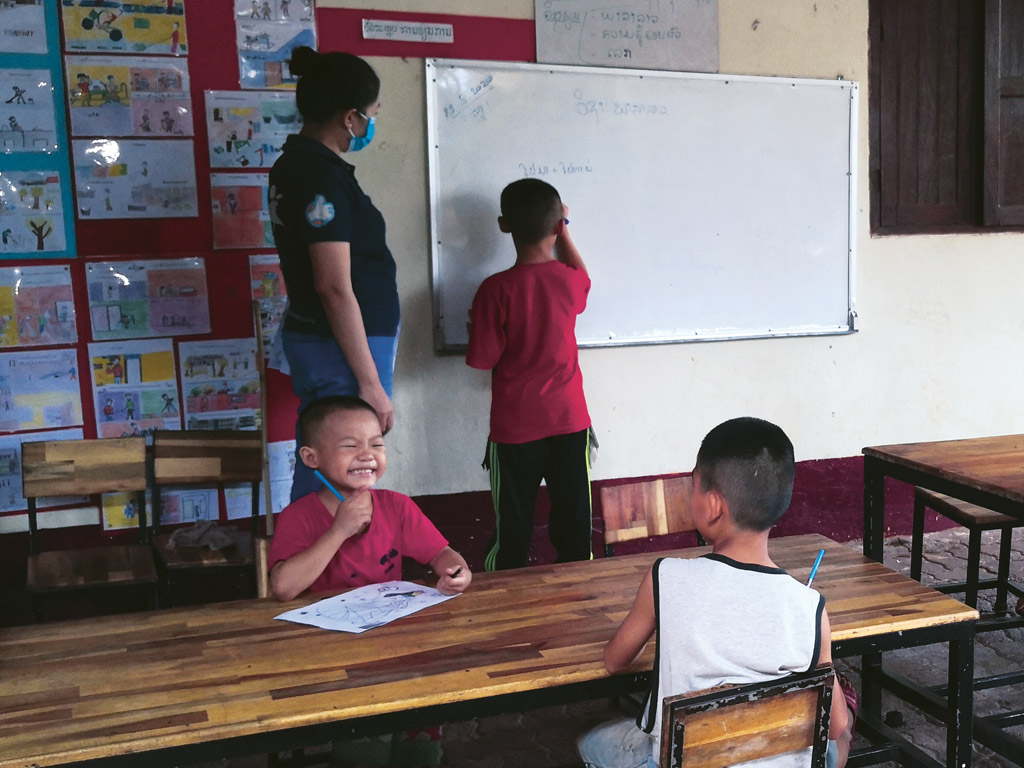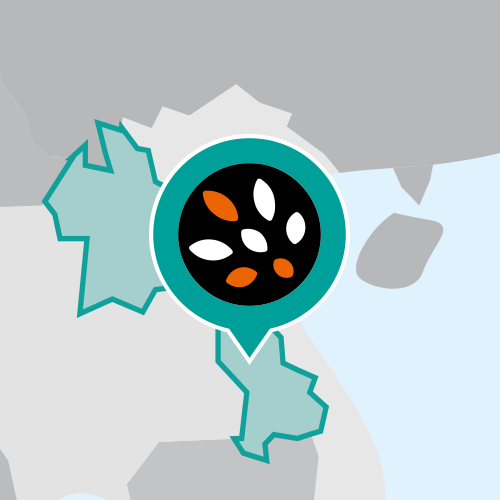
Capital: Vientiane
Population: 7 million
18% of the population living below the poverty line
Life expectancy: 68 years
Areas of intervention: Education and vocational training, gender and gender equality, conflict prevention, environment
HDI: 140th out of 191 countries
Literacy rate: 85
Contexte
Laos is a mountainous country landlocked between China, Vietnam, Thailand and Cambodia. The Mekong River, which crosses the country from north to south, is a communication route and a determining factor in the country’s economic development, which remains very weak. A large proportion of the population lives in villages and isolated areas, and road and communications infrastructures are very poor. Development is hampered in several ways. A collateral victim of the Cold War and the Vietnam War, Laos is a People’s Democratic Republic under a socialist dictatorship.
The political situation is stable, but it is suffering the consequences of the intense conflicts that have ravaged neighboring countries. Laos is the most heavily bombed country in the world. Its soil is still heavily polluted by the explosive remnants of war dropped during the Vietnam War by the United States. More than 80 million of these devices have yet to explode. Soil contamination by cluster bombs represents a constant threat to populations. The presence of these weapons prevents the development of agriculture and rural areas. Other impediments to agricultural production include the widespread practice of slash-and-burn farming. This prevents soil fertilization and leads to soil erosion. Deforestation is another problem facing the country, since wood is the country’s main economic resource, along with cotton, rice, tobacco and opium.

Activités
In Laos, Secodev’s priority area of intervention is education and vocational training. While the population’s literacy rate is historically very low, it has improved significantly among the adult population in recent years. Since 2011, it has risen from 58% to 85% of the population over the age of 15. This growth has been made possible by massive government investment in schools and international aid.
However, access to education and training remains very difficult for children, women and young people from rural areas. Laos is strongly marked by gender inequalities. Laotian society is patriarchal and traditional.


